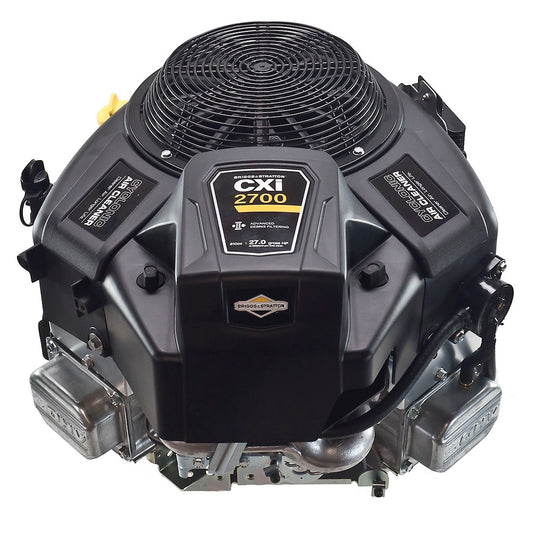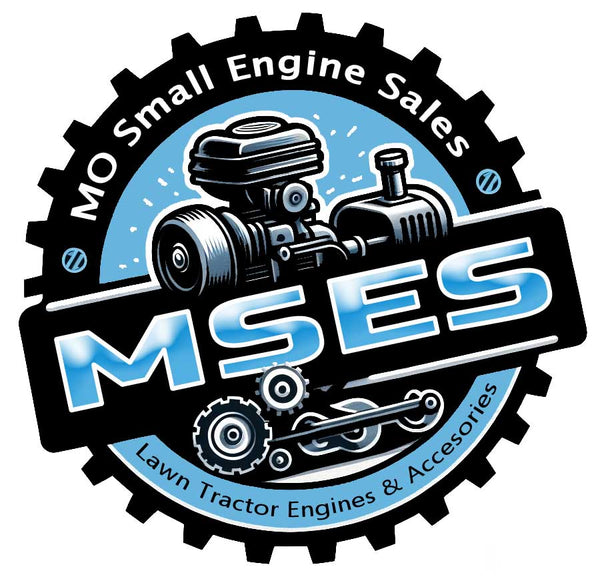
How to Choose the Right Vertical Shaft Engine for Your Outdoor Equipment
Share
Selecting the right vertical shaft engine is essential for ensuring your outdoor equipment performs efficiently and lasts longer. Whether you’re upgrading an existing machine or purchasing a new one, the engine you choose will significantly impact its reliability and functionality.
With various options available, understanding key factors such as power requirements, compatibility, brand reputation, and maintenance needs is critical.
This comprehensive guide provides valuable insights into the decision-making process, offering practical advice to help you evaluate engine options based on your equipment type and intended use.
By carefully considering factors like fuel efficiency, installation compatibility, and long-term cost, you can make an informed choice that meets your specific needs.
A well-chosen vertical shaft engine not only enhances the performance of your equipment but also ensures smooth operation over time. Use this guide to confidently navigate your options and invest in an engine that delivers durability and superior results.
Understanding Vertical Shaft Engines
Vertical shaft engines are widely used in outdoor equipment such as lawn mowers, pressure washers, and small tractors. These engines are designed with a vertically oriented crankshaft, making them ideal for applications where space is limited, and specific power transmission requirements must be met.
This unique configuration allows for efficient performance in compact environments, ensuring optimal functionality without compromising power output.
The vertical crankshaft design provides seamless integration into equipment with restricted space, making these engines a preferred choice for a variety of applications, including lawn mowers, pressure washers, and other machinery requiring a compact yet powerful engine.
This design also supports direct coupling with components, reducing the need for additional transmission mechanisms, thereby enhancing efficiency and minimizing maintenance.
Moreover, the adaptability of these engines ensures they can meet diverse operational demands across different industries. Their robust construction and reliable performance make them particularly suitable for equipment that requires consistent and durable power solutions.
The vertical orientation of the crankshaft not only optimizes power delivery but also contributes to a balanced and stable operation, enhancing overall equipment performance.
Whether for residential, commercial, or industrial use, these engines combine space-saving design with reliable functionality, making them a practical and versatile choice for powering equipment in challenging or confined spaces.
Their efficient design ensures dependable performance, making them an indispensable solution for modern machinery.
Key Features:
- Compact Design
Vertical shaft engines are specifically designed to fit into equipment with limited space, making them an excellent choice for applications such as lawn mowers and pressure washers. Their compact construction allows for seamless integration into machinery where space constraints are a concern, ensuring optimal performance without compromising design efficiency.
- Efficient Power Transmission
The vertical orientation of the crankshaft facilitates direct power transfer to the equipment's cutting blades or other operational components. This design minimizes energy loss, enhancing overall efficiency and reducing the need for additional transmission mechanisms. The result is smoother operation and improved performance, tailored to meet the demands of outdoor equipment.
- Versatility
These engines are versatile, making them suitable for a wide range of outdoor equipment, including garden tools, generators, and small industrial machinery. Their adaptability and reliable performance provide flexibility for various applications, ensuring they meet diverse operational needs with ease.
Assessing Your Equipment's Power Requirements
Selecting the appropriate power output for your engine is vital to ensure your equipment operates efficiently, effectively, and without unnecessary strain. When the engine's power is well-matched to the equipment’s requirements, it not only enhances performance but also protects the engine and machinery from premature wear and potential damage.
An engine that is too powerful for the task may lead to energy waste and increased operational costs, while an underpowered engine can become overburdened, reducing its lifespan and reliability.
The right balance ensures the engine runs at its optimum capacity, maintaining a consistent performance level while minimizing maintenance needs.
Properly sizing the power output also contributes to the safety and efficiency of your equipment. Whether you're operating a lawn mower, pressure washer, generator, or other machinery, having the correct engine output allows for smoother operation, quicker task completion, and reduced risk of breakdowns.
By considering factors such as the workload, operating environment, and specific equipment requirements, you can choose an engine that provides the ideal power-to-efficiency ratio.
This thoughtful selection process ensures your machinery operates at peak performance while maintaining durability, reliability, and cost-effectiveness, enabling you to tackle tasks with confidence and precision.
Steps to Determine Power Needs:
- Identify Equipment Type
Different types of equipment require varying levels of power. For example, a riding lawn mower typically demands significantly more horsepower compared to a walk-behind mower. Understanding the specific power needs of your machine is the first step in selecting the right engine for optimal performance.
- Consult Manufacturer Specifications
Always review the equipment’s manual or the manufacturer’s guidelines to determine the recommended engine power range. These specifications are tailored to ensure the equipment operates efficiently without overloading or underperforming, providing a reliable reference point for choosing the appropriate engine.
- Consider Usage Conditions
Evaluate the typical operating conditions in which the equipment will be used. Factors like rugged terrain, steep slopes, or heavy workloads may require an engine with higher power output to handle the additional demands effectively. Properly considering these conditions ensures the engine can meet your performance needs without unnecessary strain.
Power Output Guide:
|
Equipment Type |
Recommended Horsepower (HP) |
|
Walk-Behind Lawn Mower |
4-7 HP |
|
Riding Lawn Mower |
12-25 HP |
|
Pressure Washer |
5-10 HP |
|
Small Tractor |
15-30 HP |
Note: These are general recommendations; always refer to specific equipment requirements.
Ensuring Engine Compatibility
Ensuring compatibility between the engine and your equipment is critical for achieving smooth integration and optimal performance. A well-matched engine ensures that all components work harmoniously, enhancing efficiency and minimizing the risk of mechanical problems during operation.
Key aspects of compatibility include aligning mounting points, crankshaft dimensions, and control interfaces. The mounting points must fit securely to provide stability, preventing vibrations or misalignments that could lead to wear and tear.
Similarly, the crankshaft dimensions should match the equipment's requirements to ensure proper power transmission, whether it’s to a cutting blade, pump, or another functional component.
Control interfaces, such as throttle levers and ignition systems, also play a significant role. These must seamlessly integrate with the equipment to allow for smooth operation and ease of use. Incompatibility in these areas can lead to operational inefficiencies or even equipment failure.
By focusing on these compatibility factors, you can ensure reliable performance, extended equipment life, and reduced maintenance costs. Before purchasing an engine, consult the equipment's specifications and, if necessary, seek expert advice to confirm compatibility.
A carefully selected engine not only guarantees smooth integration but also enhances the overall functionality and durability of your machinery, making it a valuable investment.
Key Compatibility Factors:
- Mounting Configuration
Ensure the engine’s mounting points align perfectly with your equipment’s design to provide stability and prevent operational issues.
- Crankshaft Dimensions
Verify that the crankshaft’s diameter and length match the equipment’s specifications to ensure proper power transmission and compatibility.
- Fuel Type
Confirm that the engine’s fuel requirements are compatible with your equipment’s fuel system to avoid performance disruptions or damage.
- Control Interfaces
Check that the throttle controls, choke mechanisms, and other interfaces seamlessly integrate with your equipment for smooth operation and reliable performance. Proper alignment ensures efficiency and reduces potential maintenance needs.
Consulting with the equipment manufacturer or a professional technician can provide clarity on compatibility concerns.
Evaluating Engine Brands and Models
Selecting a trusted engine brand and model is essential for achieving dependable performance, long-term reliability, and ease of maintenance. A reputable manufacturer ensures that the engine is built with high-quality components designed to withstand demanding applications and deliver consistent results.
By choosing a well-known brand, you also gain access to readily available replacement parts, ensuring quick and hassle-free repairs when needed. This reduces downtime and extends the lifespan of your equipment.
Furthermore, established brands often offer comprehensive customer support, including detailed manuals, technical assistance, and warranty services, providing added peace of mind.
Investing in a trusted engine not only enhances the efficiency and durability of your machinery but also minimizes unexpected issues and maintenance costs.
Whether you’re powering industrial equipment, lawn care tools, or generators, a reliable engine from a respected brand is a smart choice that delivers performance you can count on, ensuring your investment is worthwhile.
Considerations When Choosing a Brand:
- Reputation: Opt for brands known for quality and durability.
- Availability of Parts: Ensure that replacement parts and service centers are readily accessible.
- Warranty and Support: Look for manufacturers offering comprehensive warranties and customer support.
Popular Vertical Shaft Engine Brands:
- Briggs & Stratton: Known for durability and widespread service availability.
- Kawasaki: Offers high-performance engines with advanced features.
- Kohler: Provides a range of engines known for reliability and efficiency.
Exploring the Vertical Shaft Engines Collection at Mo Small Engine Sales can provide insights into various brands and models available.
Considering Fuel Efficiency and Emissions
Modern engines are designed to deliver superior fuel efficiency and minimize environmental impact. Incorporating advanced technologies like electronic fuel injection (EFI) and overhead valves (OHV), these engines ensure precise fuel delivery and improved combustion.
This not only optimizes fuel consumption but also reduces emissions, aligning with stringent environmental standards. By combining performance with eco-friendly operation, these engines offer cost-effective solutions for a wide range of applications.
Whether used in industrial equipment or outdoor machinery, modern engines reflect a commitment to sustainability and efficiency, providing reliable power while supporting efforts to protect the environment.
Factors to Evaluate:
- Fuel Consumption: Engines with better fuel efficiency reduce operating costs.
- Emission Standards: Ensure the engine complies with local environmental regulations.
- Engine Technology: Features like overhead valves (OHV) and electronic fuel injection (EFI) can enhance efficiency.
Opting for engines with advanced technologies can lead to long-term savings and reduced environmental impact.
Maintenance and Serviceability
Routine maintenance is essential to ensure your engine delivers optimal performance and lasts longer. By regularly inspecting components, changing oil, cleaning filters, and addressing wear, you can prevent costly repairs and keep your engine running efficiently for years to come.
Maintenance Considerations:
- Ease of Access: Engines with accessible components simplify routine maintenance tasks.
- Availability of Manuals: Comprehensive service manuals aid in troubleshooting and repairs.
- Service Network: A widespread network of service centers ensures prompt assistance when needed.
Choosing an engine with a robust support system can minimize downtime and maintenance challenges.
Budgeting and Cost Considerations
Balancing cost with quality is vital when selecting an engine to ensure both value and performance. While a high-quality engine may require a higher initial investment, it often provides greater reliability, efficiency, and longevity.
Opting for cheaper, lower-quality options can lead to frequent maintenance and replacement costs over time. By considering long-term benefits alongside upfront expenses, you can choose an engine that delivers the best overall value for your needs.
Cost Factors to Consider:
- Initial Purchase Price: Higher-quality engines may have a higher upfront cost but offer better longevity.
- Operating Costs: Fuel efficiency and maintenance requirements impact long-term expenses.
- Resale Value: Engines from reputable brands often retain value better over time.
Investing in a quality engine can lead to cost savings and improved performance in the long run.
Conclusion
Selecting the right vertical shaft engine for your outdoor equipment involves careful consideration of power requirements, compatibility, brand reputation, efficiency, maintenance, and cost.
By thoroughly evaluating these factors, you can ensure optimal performance and longevity for your machinery. For a wide selection of vertical shaft engines and expert guidance, explore the offerings at Mo Small Engine Sales.
Investing in the right vertical shaft engine for your outdoor equipment is essential for efficiency, performance, and long-term reliability. Whether you’re upgrading or purchasing a new machine, making an informed choice will ensure your equipment operates at its best.
